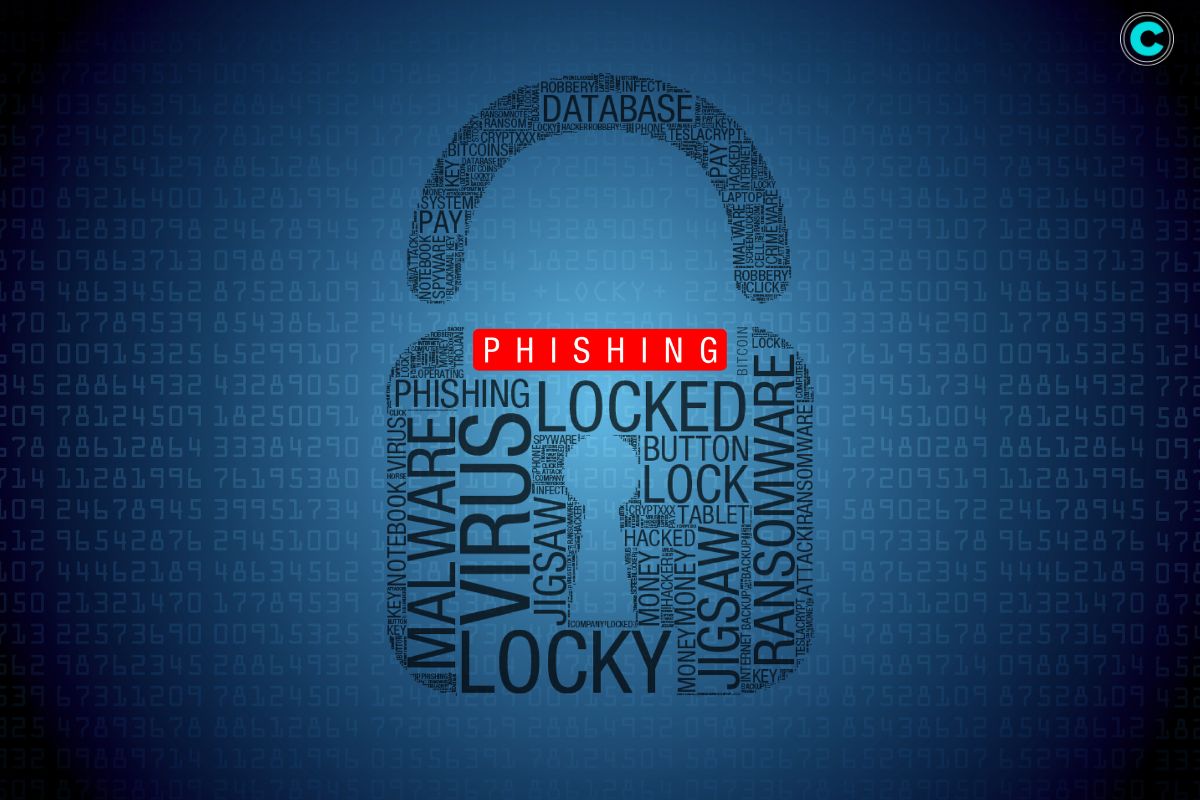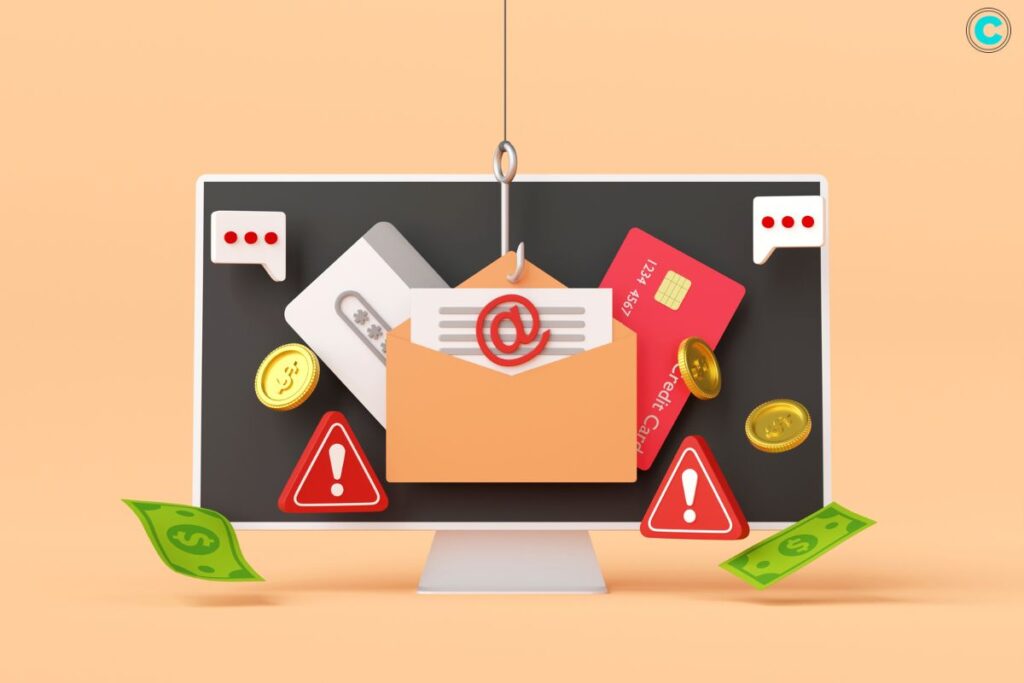Phishing attacks are like sneaky traps that cybercriminals use to trick people into giving away important information. They pretend to be someone trustworthy, like a bank or a company and try to get you to share stuff like usernames, passwords, and credit card details. It’s a big problem because these bad guys are always coming up with new ways to fool us. But don’t worry! In this article, we’ll talk about what phishing attacks are, how they work, and most importantly, how you can protect yourself from falling into their traps. So, let’s get started and stay safe online!
What is a Phishing Attack?
It is a fraudulent attempt to obtain sensitive information by disguising it as a legitimate entity in digital communications. Cybercriminals use various tactics, including email, social media, and fake websites, to trick individuals into revealing personal data. The term “phishing” is derived from “fishing,” symbolizing the act of luring someone with a bait to catch them.
How Do Phishing Attacks Work?
These attacks generally follow a similar pattern. Here’s a step-by-step breakdown of how these attacks typically unfold:
- Bait Creation: The attacker creates a deceptive message, often in the form of an email or social media post, that appears to come from a trusted source such as a bank, an online retailer, or a social media platform.
- Distribution: This bait is then distributed to potential victims. Email is the most common method, but attackers also use social media messages, text messages, and other forms of digital communication.
- Luring the Victim: The message contains a call to action, such as clicking on a link, downloading an attachment, or providing personal information. The content is designed to create a sense of urgency, fear, or curiosity.
- Harvesting Information: Once the victim takes the bait, they are directed to a fraudulent website that looks legitimate. Here, they are prompted to enter sensitive information, such as login credentials or financial details.
- Exploitation: The attacker then uses the harvested information for malicious purposes, such as stealing money, committing identity theft, or selling the data on the dark web.
Common Types of Phishing Attacks
These attacks come in various forms, each with its own methods and targets. Here are some of the most prevalent types:
1. Email Phishing
Email phishing is the most traditional form of phishing attack. Attackers send emails that appear to come from reputable organizations, urging recipients to click on a link or download an attachment. These emails often contain threats or warnings to prompt immediate action.
2. Spear Phishing
Spear phishing is a more targeted approach, where the attacker customizes the attack based on information about the victim. These attacks are personalized and often appear more credible, increasing the likelihood of success.
3. Whaling
Whaling targets high-profile individuals within an organization, such as executives or financial officers. The content of these attacks is usually crafted to look like a legitimate business email, often involving sensitive company matters.
4. Smishing and Vishing
Smishing (SMS phishing) involves sending deceptive text messages, while vishing (voice phishing) involves fraudulent phone calls. Both methods aim to trick individuals into providing personal information or making financial transactions.
5. Clone Phishing
In clone phishing, the attacker duplicates a legitimate email that the victim has received in the past, but modifies it with malicious links or attachments. Because the email appears to come from a known sender, the victim is more likely to trust it.
How to Recognize Phishing Attacks

Being able to recognize these attacks is crucial in protecting yourself. Here are some common signs to watch out for:
1. Unusual Sender Address
Check the sender’s email address carefully. Phishing emails often come from addresses that look similar to legitimate ones but may have slight misspellings or extra characters.
2. Generic Greetings
Phishing emails often use generic greetings like “Dear Customer” instead of your actual name. Legitimate organizations typically address you by your name.
3. Urgent or Threatening Language
Be wary of messages that create a sense of urgency or threaten negative consequences if you don’t act quickly. These tactics are used to pressure you into making hasty decisions.
4. Suspicious Links
Hover over the links to see where they lead. Phishing emails often contain links that direct you to fraudulent websites. If the URL looks suspicious or doesn’t match the legitimate site’s address, don’t click it.
5. Unexpected Attachments
Avoid opening attachments from unknown or unexpected sources. These attachments may contain malware that can infect your device.
Protecting Yourself from Phishing Attacks

While these attacks are sophisticated, there are several steps you can take to protect yourself:
1. Educate Yourself and Others
Awareness is the first line of defense. Stay informed about the latest phishing techniques and share this knowledge with friends, family, and colleagues.
2. Use Multi-Factor Authentication (MFA)
Enable MFA on your accounts whenever possible. This adds an extra layer of security, as even if your credentials are compromised, the attacker would need a second form of verification to gain access.
3. Verify Requests for Sensitive Information
Legitimate organizations will never ask for sensitive information via email. If you receive such a request, contact the organization directly using a verified phone number or website.
4. Keep Software Updated
Ensure your operating system, browsers, and antivirus software are up to date. Security updates often include patches for vulnerabilities that these attacks might exploit.
5. Report Suspicious Activity
If you receive a phishing email, report it to your email provider and the organization being impersonated. This helps prevent others from falling victim to the same attack.
What to Do If You Fall Victim to a Phishing Attack
Despite taking precautions, there’s always a chance you might fall victim to these attacks. If this happens, follow these steps:
1. Change Your Passwords
Immediately change the passwords for any accounts that may have been compromised. Use strong, unique passwords for each account.
2. Contact Your Bank
If you provided financial information, contact your bank or credit card company right away. They can monitor your accounts for fraudulent activity and take steps to protect your funds.
3. Monitor Your Accounts
Keep a close eye on your bank statements and credit reports for any unauthorized transactions or changes. Report any suspicious activity immediately.
4. Run a Security Scan

Use your antivirus software to run a full scan of your device. This can help identify and remove any malware that may have been installed.
5. Report the Incident
Report the attack to the appropriate authorities, such as the Federal Trade Commission (FTC) or your country’s cybercrime unit. This helps them track and combat phishing activities.
FAQs
1. What is a phishing attack?
It is a fraudulent attempt to obtain sensitive information by disguising as a legitimate entity in electronic communications, often through email or fake websites.
2. How can I recognize a phishing email?
Phishing emails often come from suspicious addresses, use generic greetings, contain urgent or threatening language, include suspicious links, and may have unexpected attachments.
3. What should I do if I receive a phishing email?
Do not click on any links or download attachments. Report the email to your provider and the organization being impersonated. Delete the email from your inbox.
4. Can phishing attacks be prevented?
While it is challenging to prevent these attacks entirely, you can protect yourself by staying informed, using multi-factor authentication, verifying requests for sensitive information, keeping your software updated, and reporting suspicious activity.
5. What steps should I take if I fall victim to a phishing attack?
Change your passwords, contact your bank, monitor your accounts, run a security scan on your device, and report the incident to the appropriate authorities.

Phishing Scam Email: How to Recognize, Prevent, and Respond
Phishing scam emails are like sneaky tricks that bad people use to fool others online. They go after regular people and even companies, trying to get them to give away important stuff like passwords
By understanding how phishing attacks work and taking proactive measures, you can significantly reduce the risk of falling victim to these cyber threats. Stay vigilant and always verify the legitimacy of digital communications before taking any action.






